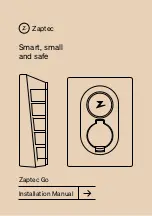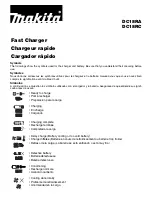
10 | SAMLEX AMERICA INC.
SECTION 3 |
General description &
Principles of Operation
Inverter Mode:
If at any instant, the external AC input power from the
utility / generator is interrupted or is not within the programmed limits
of voltage and frequency, the Transfer relay is de-energized and the load
is transferred to the Inverter Section and internal battery charging is
terminated. This is called the Inverter Mode.
Synchronized Transfer of Power
The AC input power can be fed to the G4 either from the utility or from
a generator. Normally, the utility power has a stable frequency. However,
the frequency of the generator may vary appreciably based on the value of
the load and the sensitivity of engine speed governor. The frequency of a
generator is proportional to the speed of the engine (specified in RPM i.e.
Revolutions Per Minute). For example, for producing a frequency of 60 Hz,
the generator speed has to be stable at 3600 RPM for 2-Pole generator,
1800 RPM for 4-pole generator and 1200 RPM for 6-pole generator.
Normally, engine governors will keep the speed within tolerance. However,
older engines or governors with deteriorated regulation will not be able to
maintain a steady RPM at different loads and hence, their frequency will
vary appreciably.
When a load is transferred from a primary AC source of power to another
backup AC source of power through a Transfer Switch, there will be a
finite interruption of power to the load for the transfer to take place.
When AC power fed to a reactive load (consisting of circuit inductances
and capacitances) is interrupted, the voltage across the load does not die
instantaneously but dissipates in tens of milliseconds due to residual power
stored in its reactive components (combination of its circuit inductances
and capacitances). The voltage and phase of the residual power in the load
after interruption of the AC source are the same as the voltage and phase
of the AC source at the time of interruption. A mismatch of phase and
frequency of the primary AC source and the backup AC source at the time
of transfer is likely to damage the backup AC source / load. For a smooth
and safe transfer to take place, the following conditions are required to be
met:
• For a very fast and safe transfer, the phase and frequency of the
backup AC source that is going to take over the load has to be
synchronized with the phase and frequency of the primary AC source
that is being removed from the load. A very fast transfer is desirable
for sensitive loads like computers etc because a longer transfer time
may crash the computer if the power supply of the computer does
not have adequate “Hold Up Time” (“Hold up Time” is the duration
of power interruption that can be withstood by the computer to
prevent crashing. This time is usually > 20 millisecond).
In the G4
series, the phase and frequency of the internal Inverter Section
is always kept synchronized with the external input from the
utility / generator (within a specified window) for fast and safe
transfer.
• If the phase and frequency of the primary AC source and the backup
AC source cannot be synchronized, the transfer time has to be
increased considerably to allow the residual voltage in the load to
dissipate before the transferee AC source is connected to the load.
Longer transfer time is acceptable for general purpose loads like
lighting, motors, appliances, etc.
Transfer From Inverter to Utility / Generator
Whenever the G4 Series is switched ON, it will always start in
Inverter Mode first even if external utility or generator input is
available.
The output of the inverter ramps up from around 40 vAC to
120 vAC in around 350 ms under "Soft Start" and is slowly synchronized
with the frequency of the external utility / generator and the load is
transferred / by-passed to the external utility / generator when fully
synchronized and at the same time, the Battery Charger Section starts
charging the batteries. This preparation time for ensuring synchronized
transfer from the Inverter Mode to the Utility / Generator Mode may take
around 20 to 30 sec. The transfer from the Inverter Mode to the Bypass /
Charger Mode will take place only under the following conditions:
• The voltage of the external utility / generator is within the limits of low
and high input voltages set through the Setting Mode, Screens
2 & 3 (page 39)
• The frequency of the external utility is 5 Hz and – 3 Hz if
Utility Mode has been selected through the Setting Mode, Screen 1
(Generator Mode Disable)
•
The frequency of the external generator is not considered if the
Generator Mode is selected through the Setting Mode, Screen
1 (Generator Mode enable). The inverter will still synchronize
with the phase and frequency of the generator before the
transfer takes place. Charging will be interrupted during the
period when Generator frequency is outside the range of 45 Hz
to 65 Hz due to overload distortion.
NOTE:
As generators have a wider frequency fluctuation, the
frequency is not considered to qualify for transfer. The inverter still
synchronizes with the phase and frequency of the generator before
transfer takes place. Thus, in the Generator Mode, the load will be
forced to operate under the actual wider frequency variations of
the generator as compared to more narrow frequency limits of +
5 to – 3 Hz in the Utility Mode. Hence, the user should ensure that
when “Generator Mode” is selected, the loads should be able to
handle the wider frequency variation of the generator.
Transfer From external Utility /
Generator To Inverter
After the load has been transferred to the external utility / generator, the
Inverter Section is always kept synchronized in frequency and in phase
with the external utility / generator voltage. In case the unit is set in Utility
Mode and the utility fails or if its voltage / frequency of the utility are
outside the set limits, the load is immediately transferred safely to the
inverter within around 20 ms. Similarly, if the unit is set in the Generator
Mode and if the generator fails or its voltage is outside the set limits, the
load is safely transferred to the inverter within around 20 ms.
(Please note
that in Generator Mode, the frequency is not qualified for transfer,
however, charging will be interrupted during the period when
generator frequency is not within the range of 45 to 65 Hz due to
overload distortion).
The inverter executes a soft start and its output
voltage ramps up from around 40 vAC to the full 120 vAC in around 350
ms thus reducing the inrush current drawn by the load on transferring to
backup AC power.
Power Save Mode
When the unit is operating without any load connected to it, it requires
some minimum input power from the battery to keep all the sections
inside the unit alive and ready to deliver power to the AC load as soon as
the load is switched on. This power is called the “No Load Power Draw”











































